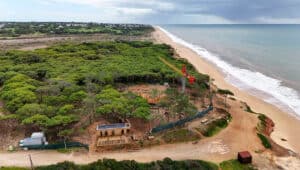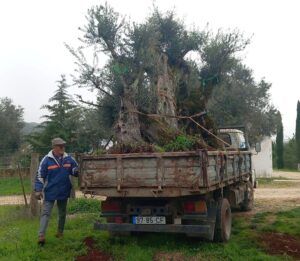Already outdated national census shows precarious wolf presence declining
The area of wolf presence in Portugal has decreased by 20% and the number of packs detected has fallen by 8% to 58 in two decades, mainly north of the River Douro, the 2019/2021 National Census reveals.
The data is contained in the report and portal of the National Wolf Census, coordinated by the Institute for Nature Conservation and Forests (ICNF).
Between censuses, the estimated number of packs has dropped from 63 recorded in the 2002/2003 census, to 58, with 56 confirmed and two only considered probable.
Although it is difficult to ascertain the number of animals in each pack, the study estimates that the ‘wolf population in Portugal is around 300 animals’, which roughly corresponds to the average estimate of 190 to 390 wolves, a range that represents the oscillation in the number of animals throughout the year, namely between the end of winter, before births, and autumn, at the end of the breeding season.
Most of the packs are to be found north of the Douro river, spread across three population centres (Peneda/Gerês, Alvão/Padrela and Bragança), with only five to six packs in the southern Douro centre.
The results point to a 20% reduction in the area of wolf presence in Portugal over the last two decades, particularly in the Trás-os-Montes region and south of the Douro.
According to the report, in Peneda/Gerês there was an increase in packs, from 16 to 24, while there was a decrease in the remaining three centres, especially in Alvão/Padrela, where the number of estimated packs fell by more than 50% (from 13 to six).
The report states that the detection of new packs in Peneda/Gerês may be related to ‘the greater sampling effort applied’ in the work and/ or ‘the increase in food availability associated with the increase in the number of cattle grazing freely in some areas’.
Among the main factors jeopardising wolf conservation are ‘human-caused mortality’ (trampling, snaring, shooting, poisoning), predator attacks on livestock (cattle, sheep or goats), which leads to less tolerance of wolves’ presence, low availability of wild prey and the installation of communication and energy production infrastructures.
The presence of the wolf suffered a sharp decline in Portugal between the end of the 19th and beginning of the 20th centuries, as was the case in the rest of Europe, and at national level it has had ‘endangered’ status since 1990.
The first national wolf census took place in 2002/2003 and this latest, already out of date, comes nearly 20 years later.
The aim of the census is described as contributing to “ensuring the necessary compatibility of human activities with the presence of the species, helping to achieve a favourable conservation status for the wolf”.
Fieldwork was carried out by organisations such as the universities of Aveiro and Trás-os-Montes and Alto Douro, Grupo Lobo, Palombar, A.RE.NA. Asesores en Recursos Naturales (Natural Resources Advisors) and ARCA People and Nature – all under the auspices of the ICNF – using methods such as evidence prospecting (droppings), photographic and acoustic trapping and data provided by the 16 monitoring projects underway during the study.
But, as Lusa’s report starkly concludes, “the results of the current census show that the objectives set 20 years ago to improve the state of wolf conservation in Portugal have not been achieved”.
The report advocates measures to increase the wolf’s range north and south of the River Douro: – maintaining and restoring suitable habitat for the species’ refuge and reproduction, protecting breeding sites, increasing the presence of the wolf’s wild prey (roe deer) and reducing poaching and other causes of unnatural mortality, ensuring the permeability of existing infrastructure (roads, dams), reducing the conflict associated with wolf predation on livestock by improving and speeding up the compensation system for losses and promoting cooperation with Spain.
All this however will be measured against ‘the needs of the country’, as has been seen in Montalegre where ecologists claim the presence of the wolf will be viewed as ‘expendable’ if the fiercely locally-contested plan for a lithium mine gets the government green-light, in the name of ‘the energy transition’ (which seems more than likely). ND
Source material: LUSA


























